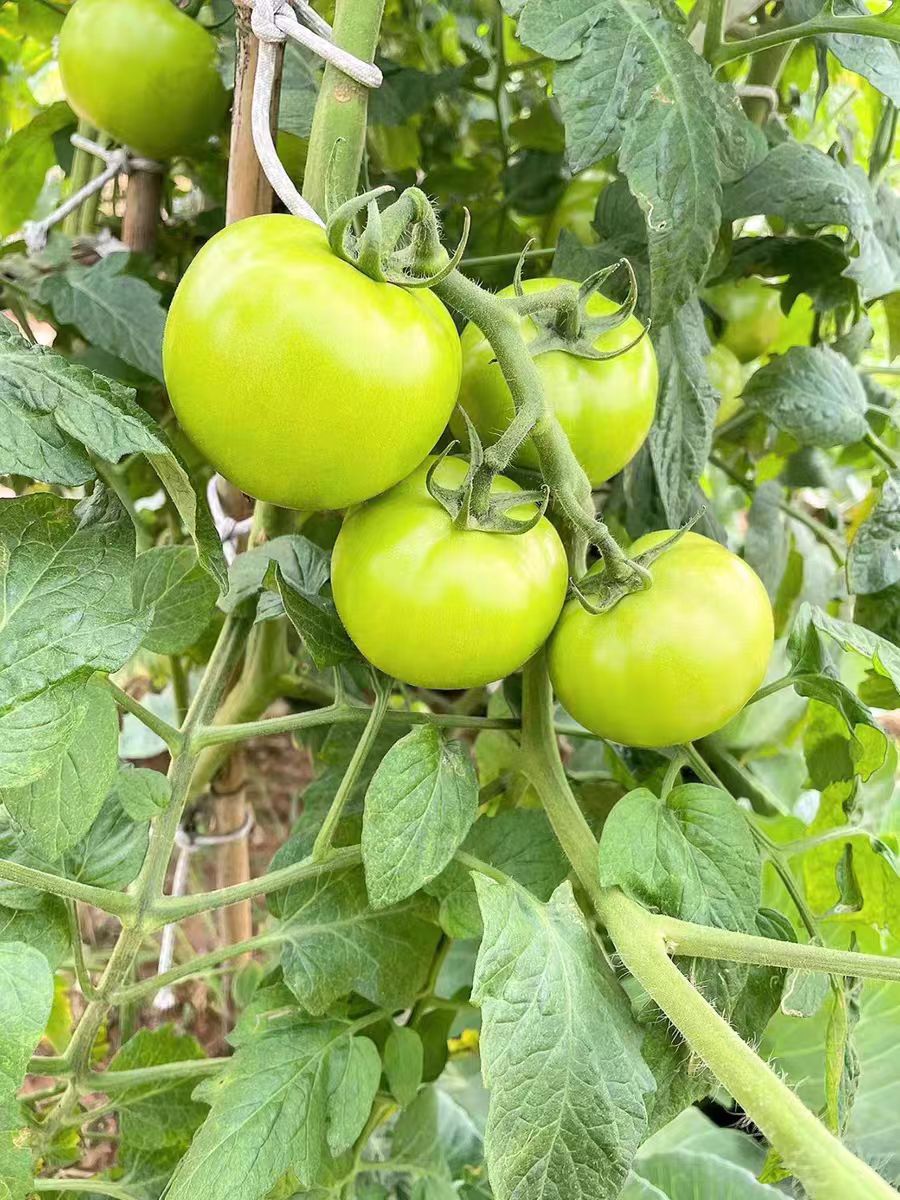Horsetail Tomato belongs to the indeterminate tomato variety, meaning its vines continue to grow without naturally stopping, and it continuously flowers and fruits. As long as environmental conditions are suitable—such as optimal temperature, light, and water—along with proper management, even after one batch of fruits is harvested, new fruits will continue to emerge.
The growing tip of this type of tomato continuously differentiates into new stems, leaves, and flower clusters. Generally, a flower cluster appears every three new leaves, and this growth pattern continues throughout the growing season. For example, in the 2024 spring tomato planting list, Horsetail Tomato, together with Provence Tomato, is classified as an indeterminate large-fruited tomato variety.
Additionally, from the perspective of growth cycle and management, indeterminate tomatoes require topping to control their height; otherwise, they will grow vertically indefinitely, dispersing nutrients. Topping redirects nutrients to the fruits, promoting their development. Horsetail Tomato typically needs topping when it reaches 5–6 fruit clusters, which aligns with the management characteristics of indeterminate varieties.
Why does it continue to bear fruit after harvesting? This is because the main stem of indeterminate tomatoes continuously produces new flower clusters. Even if lower fruits are harvested, upper flower buds will continue to differentiate. For instance, after the first cluster of Horsetail Tomato matures, retaining one reddened fruit can act as a natural ripening agent to accelerate the maturity of subsequent fruits. As long as the plant has sufficient nutrients, fruits in the 2nd to 6th clusters will gradually develop and ripen.
Of course, this requires supporting management measures:
Pruning side shoots promptly: Remove excess lateral branches to prevent competition for nutrients with fruits.
Regular fertilization: Supply the plant with nutrients such as nitrogen, phosphorus, and potassium to ensure it has adequate "energy" during the fruiting period.
Timing of topping: Perform topping at the appropriate number of fruit clusters to concentrate nutrients on fruit development.
Environment is also critical. Horsetail Tomato thrives in temperatures between 15–35°C. Climates like that of Lianzhou, Guangdong, are suitable for multiple cropping; as long as frost is avoided, it can continuously bear fruit throughout the growing season.
However, some may have misconceptions—for example, hearing about "self-topping" Horsetail Tomatoes. These are likely local varieties or mutations that occur under specific environmental conditions. Long-term small-scale cultivation in certain regions may alter varietal characteristics, leading to self-topping (stopping vertical growth after reaching a certain height), which differs from the mainstream Chaoshan Horsetail Tomato. Additionally, Horsetail Tomatoes in different regions may exhibit varying growth characteristics due to differences in planting habits or varietal improvements. For example, greenhouse cultivation in northern regions may shorten the fruiting cycle due to limited light and temperature, but this is an environmental effect, not an inherent varietal trait.
For practical growers, note the following:
Staking and training: Since Horsetail Tomato is indeterminate and can grow over 1.5 meters tall, install supports and tie the vines when the plant reaches 30 cm to prevent lodging.
Pruning: Retain the main stem and 1–2 strong lateral branches, removing other side shoots as early as possible to conserve nutrients.
Fruit thinning: Retain 3–7 fruits per truss, adjusting by cluster (e.g., 3–4 fruits on the first cluster, 4–5 on the second, and more on subsequent clusters) to avoid premature plant aging due to excessive fruiting.
Harvesting: Pick fruits when they redden and soften. To accelerate ripening of subsequent fruits, leave 1–2 fully ripe fruits on the plant as natural ripening agents.
In summary, as an indeterminate variety, Horsetail Tomato will continue to bear new fruits after harvesting if fertilization, pruning, and staking are properly managed and suitable growing conditions are maintained. Its continuous fruiting capacity relies on scientific management and appropriate conditions. If fruit production decreases during cultivation, check for issues such as pests, nutrient deficiencies, or delayed topping—addressing these promptly will help the plant grow and fruit better.
Is (Horsetail Tomato) a determinate or indeterminate grower?

Share with
Tagged in :




Leave a Reply